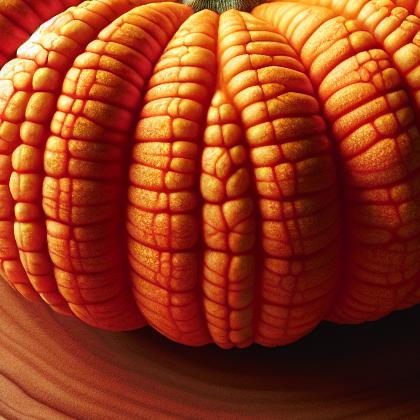Drained Pumpkin

Pumpkin is the name of a plant that refers to certain cultivars of squash, most commonly those of Cucurbita pepo, that are round, with smooth, slightly ribbed skin and deep yellow to orange coloration. The thick shell contains the seeds and pulp. Some exceptionally large cultivars of squash with similar appearance have also been derived from Cucurbita maxima. Specific cultivars of winter squash derived from other species, including C. argyrosperma, and C. moschata, are also sometimes called "pumpkin". In New Zealand and Australian English, the term "pumpkin" generally refers to the broader category called winter squash elsewhere.Pumpkins, like other squash, are native to North America. Pumpkins are widely grown for commercial use, and are used both in food and recreation. Pumpkin pie, for instance, is a traditional part of Thanksgiving meals in the United States, although commercially canned pumpkin puree and pumpkin pie fillings are usually made from different kinds of winter squash than the pumpkins frequently carved as jack o'lanterns for decoration around Halloween.
Drained pumpkin Pairs With:
Drained pumpkin Properties:
| Food Property | Type | Description |
|---|---|---|
| Flavor Profile | Sweet | The taste of natural sugars present in the pumpkin. |
| Sour | Slight sourness that may be present in the drained pumpkin. | |
| Texture | Moisture | The amount of water content remaining in the drained pumpkin. |
| Nutritional Value | Fiber | The dietary fiber content present in the drained pumpkin. |
| Color | Natural Pigments | The natural color of the pumpkin flesh after draining. |
| Aroma | Fermentation | Any fermented aroma that may develop in the drained pumpkin. |
| Cooking Behavior | Water Retention | Ability of the drained pumpkin to retain water during cooking. |
| Oil Absorption | The amount of oil absorbed by the drained pumpkin during cooking. |
Food Pairing App - Version 1.2.0
